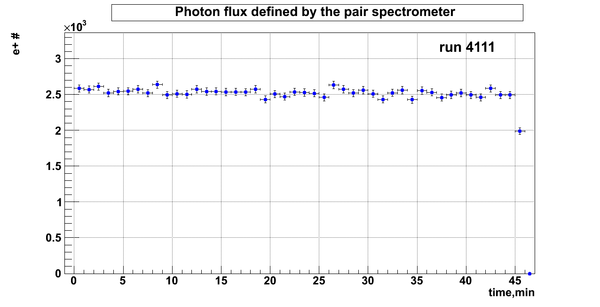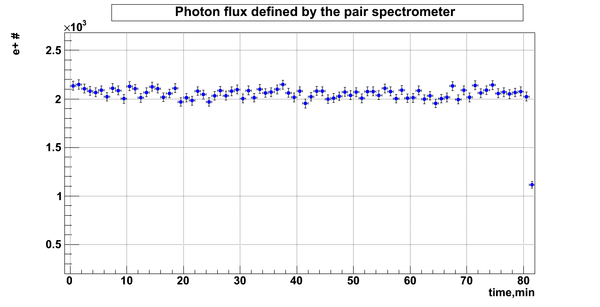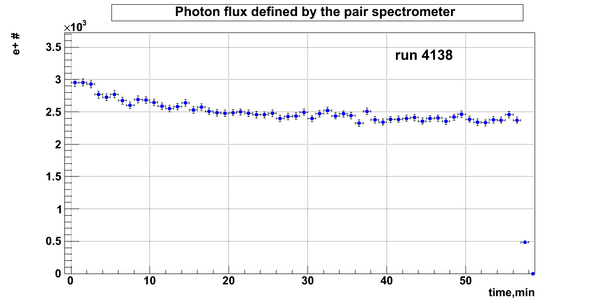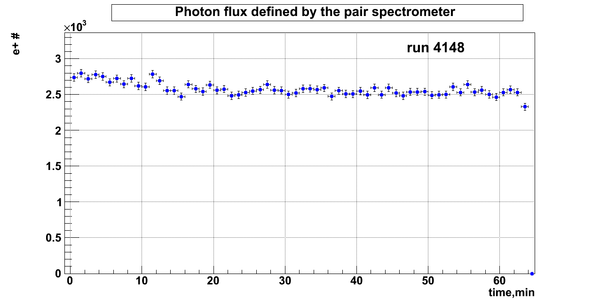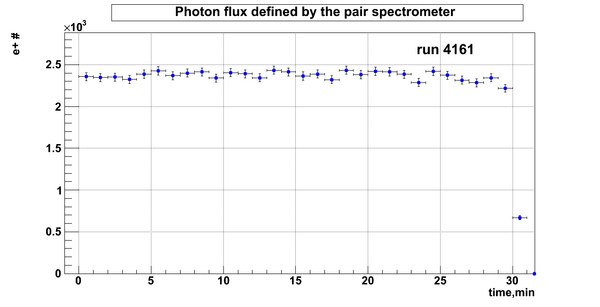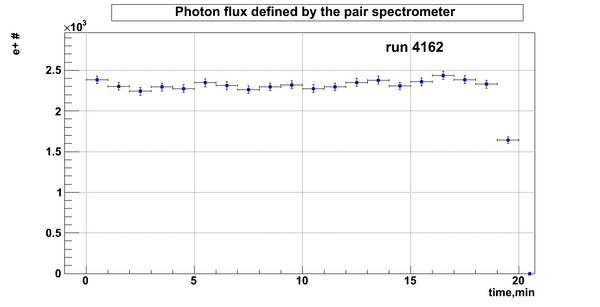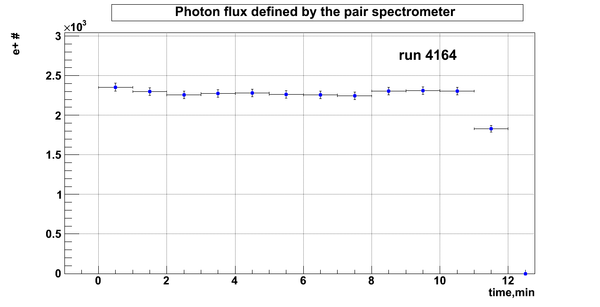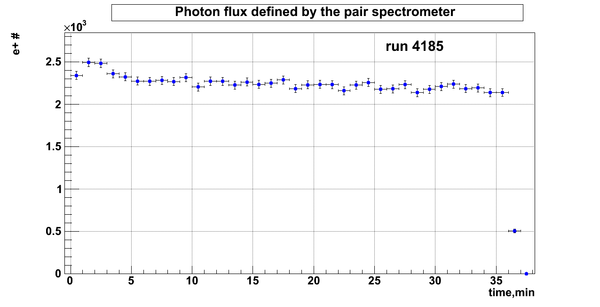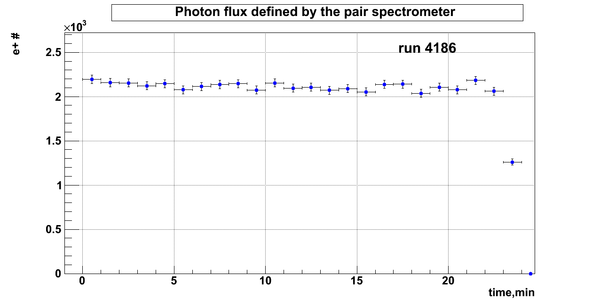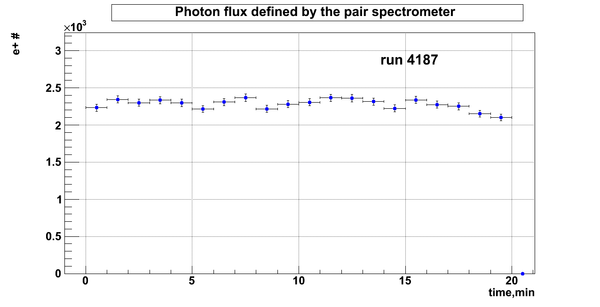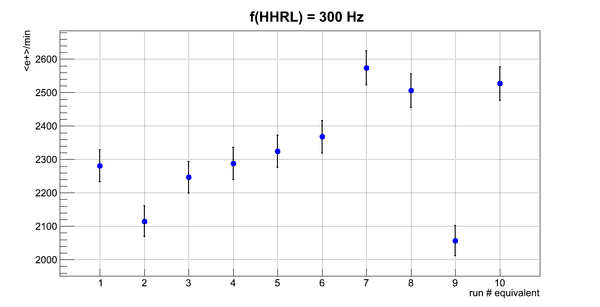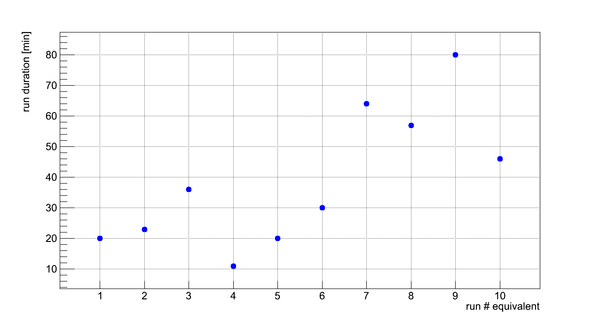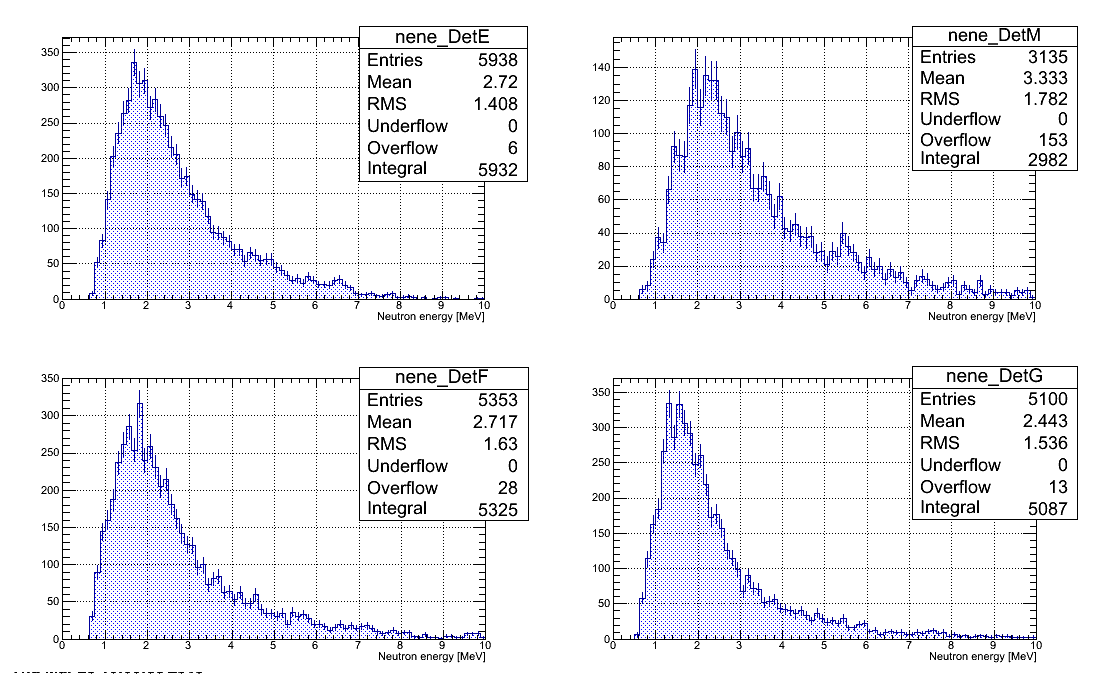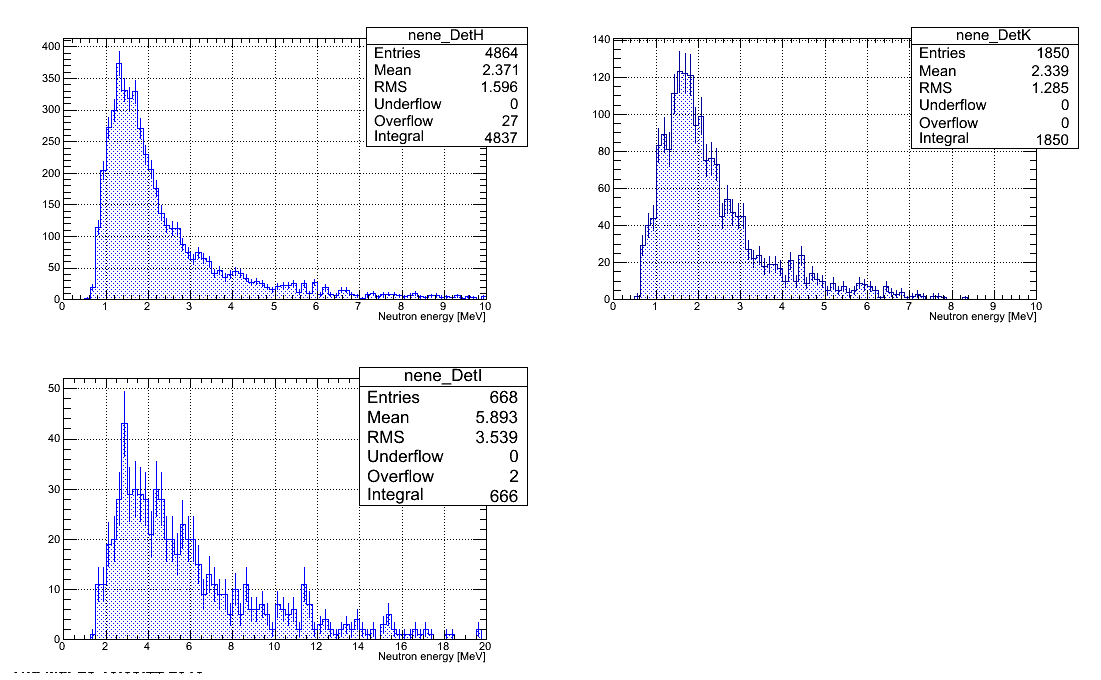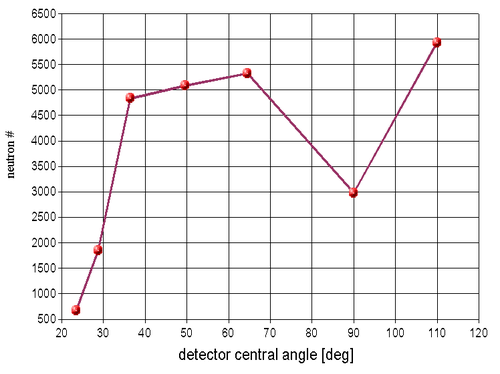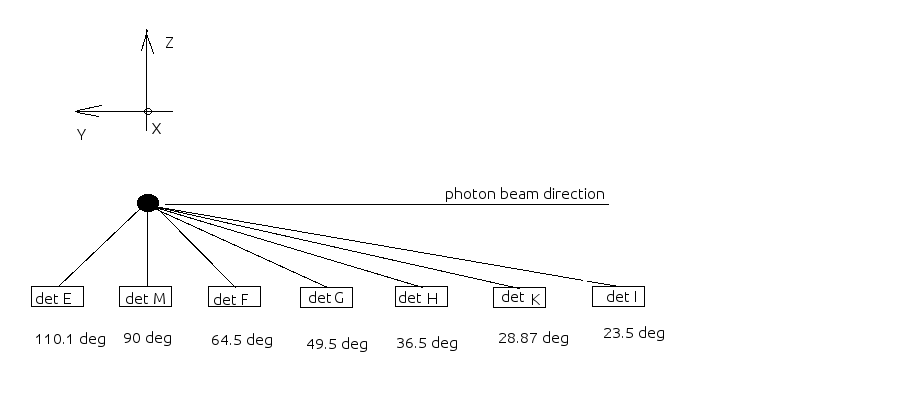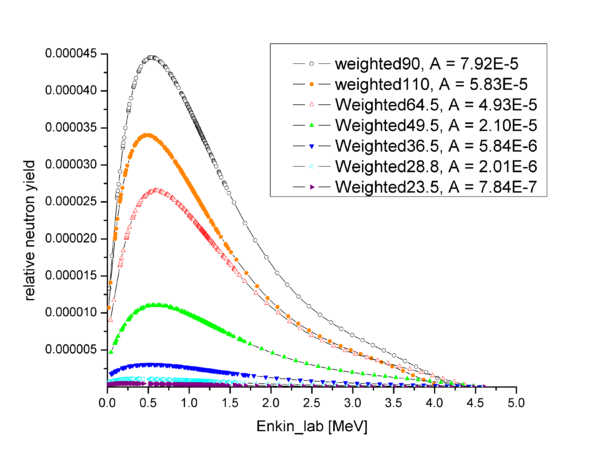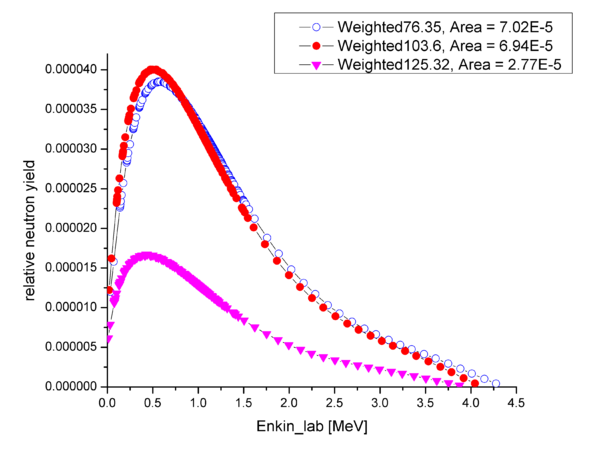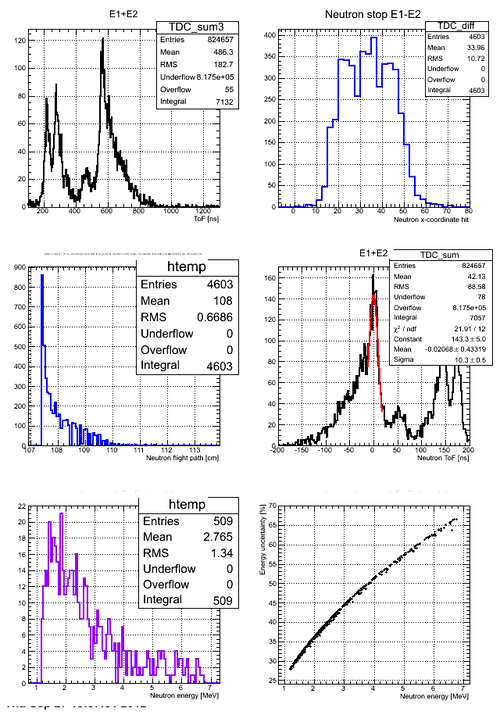Difference between revisions of "D2O bank"
| Line 101: | Line 101: | ||
Nn(H) = 4202 | Nn(H) = 4202 | ||
| + | Now we can calculate the efficiency of the detectors I, K and H in terms of the efficiency of detector E obtained during the regular calibration run: | ||
| + | <math>\epsilon_I = \epsilon_E \cdot \frac{N_n^I \cdot Area_E}{N_n^E \cdot Area_I}</math> | ||
===Conclusions on the efficiency=== | ===Conclusions on the efficiency=== | ||
Revision as of 18:22, 15 June 2013
Relative photon flux
Relative photon flux obtained during the experiment using D2O target.
Normalization?
Flux fluctuation over the runs:
run # equivalent 1 corresponds to run 4187, 2 - 4186, 3 - 4185, 4 - 4164, 5 - 4162, 6 - 4161, 7 - 4148, 8 - 4138, 9 - 4126, 10 - 4111.
The thing is that the pair spectrometer is sensitive to the low energy background which may be present in the beam (e- beam finite size and, hence, scraping) so the value of the flux may be affected by low energy component. This thing may not be reflected in the number of neutrons detected by the neutron detectors. So, it is arguable that the pair spectrometer can be used for the flux normalization procedure. One has to investigate the energy spectra of the positrons detected.
Neutron energy spectra
Neutron energy spectra restored from all the runs with D2O target are plotted below. Statistical error bars only presented. All the histograms have same number of channels.
Neutron number vs neutron detector central angle is plotted below:
Detector efficiency
The relative neutron yield obtained by weighting the D2 photodisintegration cross section by bremsstahlung photon flux and solid angle of each of the detector is plotted below as a function of the neutron kinetic energy recalculated from the photon energy using simple kinematics:
As an example of the efficiency calculation let's find the efficiency of Det M in terms of the known absolute efficiency of Det E (14%):
For the efficiency calculation see slide 15 of [[1]]
,
Without regards to the neutron energy range one gets the following:
and, hence,
However, doing the same calculation fro the rest of the detectors one will get
In order to get correct values of the neutron detection efficiency for the detectors I, K and H we did another calibration run where the D2O target was moved towards the neutron detectors as shown below:
The solid angles changed and was obtained from the simulation:
The relative neutron yield for each of the detectors under consideration is plotted below as a function of the neutron kinetic energy:
From the experimental data it was defined the total number of neutrons detected by the neutron detectors I, K and H during the calibration run:
Nn(I) = 512
Nn(K) = 4175
Nn(H) = 4202
Now we can calculate the efficiency of the detectors I, K and H in terms of the efficiency of detector E obtained during the regular calibration run:
Conclusions on the efficiency
High values of the neutron detector efficiencies mean that it is necessary to do the right energy cut on the experimental neutron energy spectra. In order to do precise conversion of the neutron time-of-flight into neutron energy one needs a good neutron hit position resolution along the detector surface and good timing resolution between the photon peak and neutron region.
Energy uncertainty issue
Statistical errors on the number of neutrons per energy bin are not bad, however, big uncertainties in energy come due to the wide width of the photon peak:
